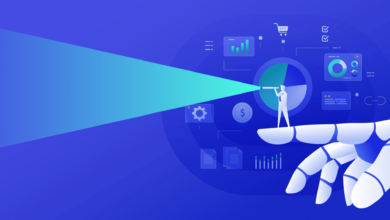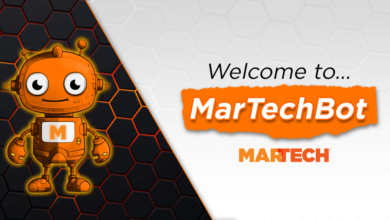Why Your Business Needs a Branded LLM to Thrive
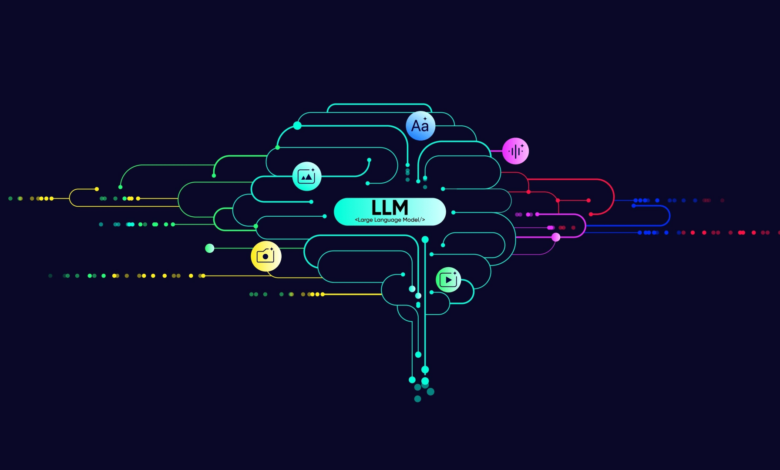
As businesses aim to deliver consistent, personalized engagement across multiple channels, a branded LLM is emerging as a transformative solution.
Powered by generative AI, a branded LLM ensures that customer interactions remain consistent, compliant and personalized at scale, effectively shaping every touchpoint to reflect the company’s identity.
What is a Branded LLM?
A branded LLM (large model language) is an AI-powered generative system fine-tuned to embody a company’s brand identity, values, guidelines and content standards.
It acts as a centralized, dynamic resource for creating, managing and delivering consistent, personalized branded content across all customer interactions and engagement channels.
3 Reasons Your Business Needs a Branded LLM
Modern brands must balance consistency, compliance and personalization to stay competitive. Traditional methods of brand asset management no longer meet these requirements. A branded LLM addresses these challenges in three key ways.
1. It becomes your company’s most valuable asset
A branded LLM encapsulates everything your company brand stands for, forming the basis of every customer interaction. Until 90% of the value of S&P companies is related to intangible assets like “customers’ future purchasing intentions,” as opposed to tangible assets like buildings and inventory.
Managing your brand goes beyond just storing assets on a shared server. It’s about shaping preferences in the minds and hearts of customers.
2. It ensures compliance and consistency across markets
A branded LLM ensures that every interaction complies with local laws, product variations and brand guidelines. For example:
Showing the color of a car door handle on a listing that is not for sale in a country hinders sales. A slogan that is not translated into French may give rise to prosecution.
A branded LLM automates compliance and ensures consistency across all markets.
3. It unlocks unprecedented personalization
A branded LLM enables unprecedented personalization by making real-time personalization of text, images and videos possible. While text personalization is now common in campaigns, visuals often remain static. The potential for fully personalized visuals at scale is still untapped. A branded LLM also helps navigate the fine line of hyper-personalization, ensuring that it avoids the “scary factor” by knowing when not to personalize.
While the benefits of a branded LLM are clear, realizing its full potential requires integrating it seamlessly into your existing infrastructure. This is where the connection between the data and content layers becomes critical.
When the data layer meets the content layer
Many brands excel at collecting and interpreting customer data, but still struggle with poor content delivery. Most brands have a data layer that efficiently collects, processes, and distributes audience insights to engagement channels.
In contrast, the content layer, which manages customer-facing elements such as text, images and videos, remains siled, fragmented and manual. Although the data layer is almost transparent, the content layer faces significant integration challenges.
This gap is especially evident in time-sensitive campaigns in complex markets with multiple segments, languages and currencies. For example:
A delayed product image can cost a tech manufacturer millions in lost revenue and digital storage space. A real-time, hyper-personalized shopping cart offering is crucial to retaining customers in an e-commerce environment.
Why the content layer is broken
The content layer is often non-existent or, at best, broken. While the data layer processes information seamlessly through tightly integrated steps using APIs and (reverse) ETL mechanisms, the same level of integration is lacking in the content supply chain.
Systems and elements in the content layer are either not integrated or poorly integrated.
Corporate identity: Guidelines for house style and brand identity.
creative design software: Design software for creating assets.
Digital Asset Management (DAM): Storage of brand and campaign materials
Web2Publish (W2P): Production of modeled guarantees.
Product Information Management (PIM).
Content Management Systems (CMS).
Digital Experience Platforms (DXP).
Data Management (MDM): Definitions of legal entities.
Engagement Channels: Email, push, SMS, chat, in-app and much more.
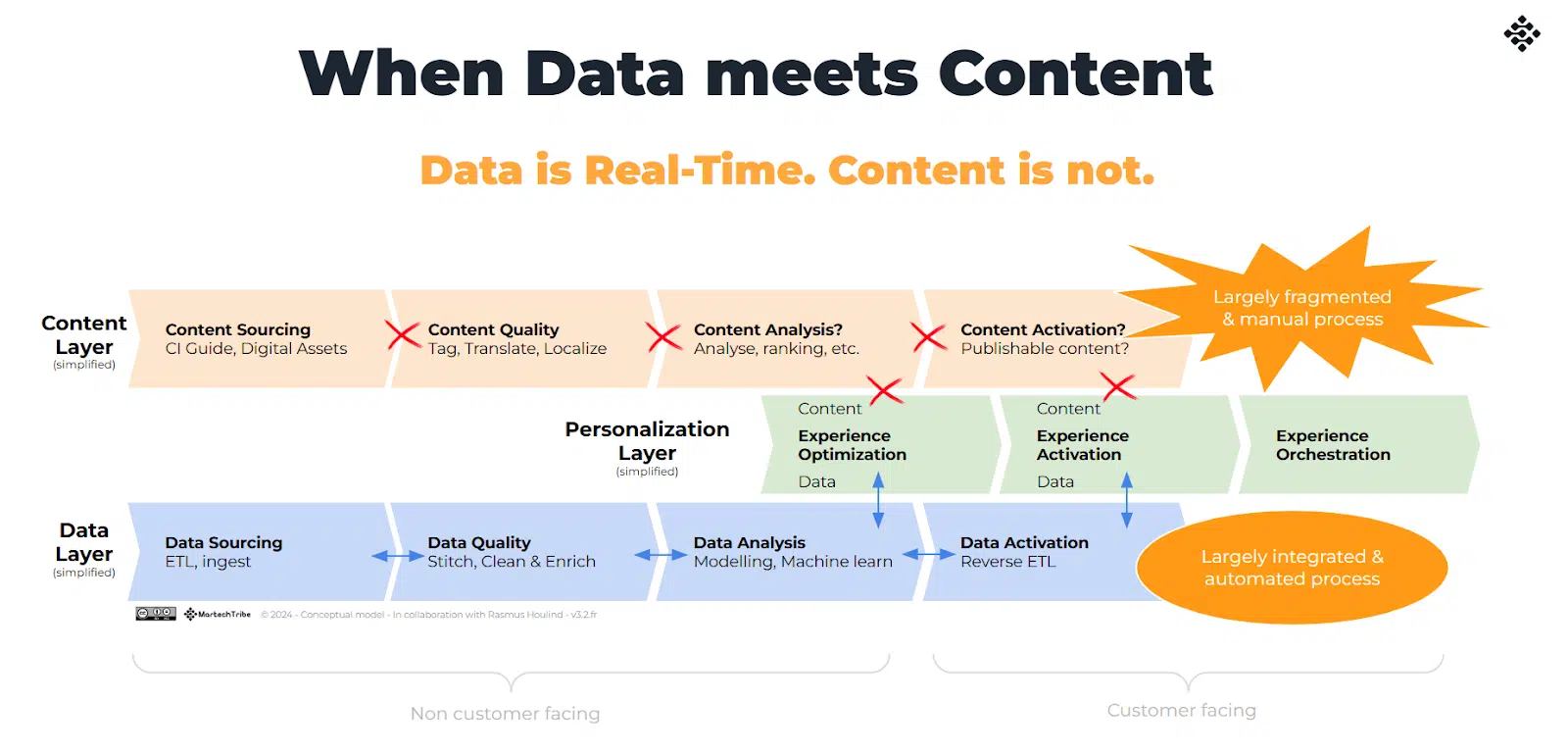

The challenge is not due to poor work by content providers. On the contrary, rendering content in real time is complex due to three major obstacles.
Creativity: Human creativity is difficult for computers to imitate, hence the laborious manual labor. (Think in-house studios.)
Computing power: Rendering large files, such as image and video assets, requires significantly more processing power than digital data. (Think about the size of Photoshop, MOV, or MP4 files.)
Integration: Seamlessly transferring large content files between systems remains a manual process. (Think WeTransfer or WeSendIt.)
These challenges have left the content layer immature for decades, making it difficult to realize its full potential – until now.
Generative AI is a game-changer, providing the creativity, computing power and integration needed to revolutionize the content layer.
How to create a content layer with generative AI
To shape their content layer, brands must start by understanding the importance of the master file.
The master file is the highest quality original version of a digital asset: uncompressed, high resolution and complete with metadata (EXIF, IPTC, XMP). It serves as a source for creating derivative versions for web, print or social media.
However, regional adaptations often dilute the brand and message, which has led to a long-standing best practice of restricting access to master files to studio-trained creatives.
“Don’t share the main file.”
– John van Tuyll, Global Brand Marketing Operations, Adidas
Now, thanks to generative AI, the concept of a master file can evolve. Instead of using static master files, brands can create a branded LLM that serves as a dynamic source for content creation.
There are several use cases for branded LLM in everyday marketing activities. Perhaps the LLM brand is used in its own user interface where content can be downloaded or accessed via an API to render a specific output. The output might look like this.
Annotation branded materials to ensure compliance and consistency.
Suggesting adaptations to boost conversion rates or respond to local regulations (a use case recently launched by Jasper.ai).
Optimization branded materials for high-performance, data-driven campaigns.
Produce real-time content for media and campaigns.
Activation Channel-specific content tailored to audience parameters and delivered directly through engagement solutions to customers.
Dig Deeper: AI Opportunities in Digital Asset Management
How to Create Brand Master LLMs
Brands can create a branded LLM by integrating customer and brand data into AI systems. This can be achieved in four ways.
Refine pre-trained models: Personalize existing LLMs with your branded content.
Rapid engineering: Create prompts to align AI results with your brand tone.
Custom data integration: Include resources such as product catalogs or FAQs.
API integration: Use APIs like OpenAI’s GPT to integrate LLM functionality into workflows.
These methods can work together in a retrieval augmented generation (RAG) framework, which retrieves relevant data, applies prompts, and generates brand-specific results. This approach ensures real-time adaptability for applications such as customer support or campaign management.
“Generating new content directly with an LLM yielded significantly better results compared to starting with derivative assets. »
– Rasmus Houlind, Agilic
By managing content using a branded LLM, businesses can prioritize and streamline their existing content, producing relevant messages at the right time and in the right place.
What Your Branded LLM Should Cover
When refining your Brand LLM, include the following levels:
Brand Level
Define your brand identity and reputation, using guidelines or positioning it as a relatable personality. Customers connect emotionally to brands, often seeing them as extensions of their founders’ intentions.
Campaign level
Describe (resolved) value propositions, messaging, tone and media mix strategies. Campaigns connect brand identity with concrete tactics to influence customer attitudes and behaviors.
Guarantee level
Specify prompts for things like product photos, logos, and slogans. This level ensures consistency and evaluates effectiveness through content feedback metrics.
Content level
Address co-branded materials, third-party collaborations, and snackable content for digital platforms. This ensures that your brand scales seamlessly across various use cases.
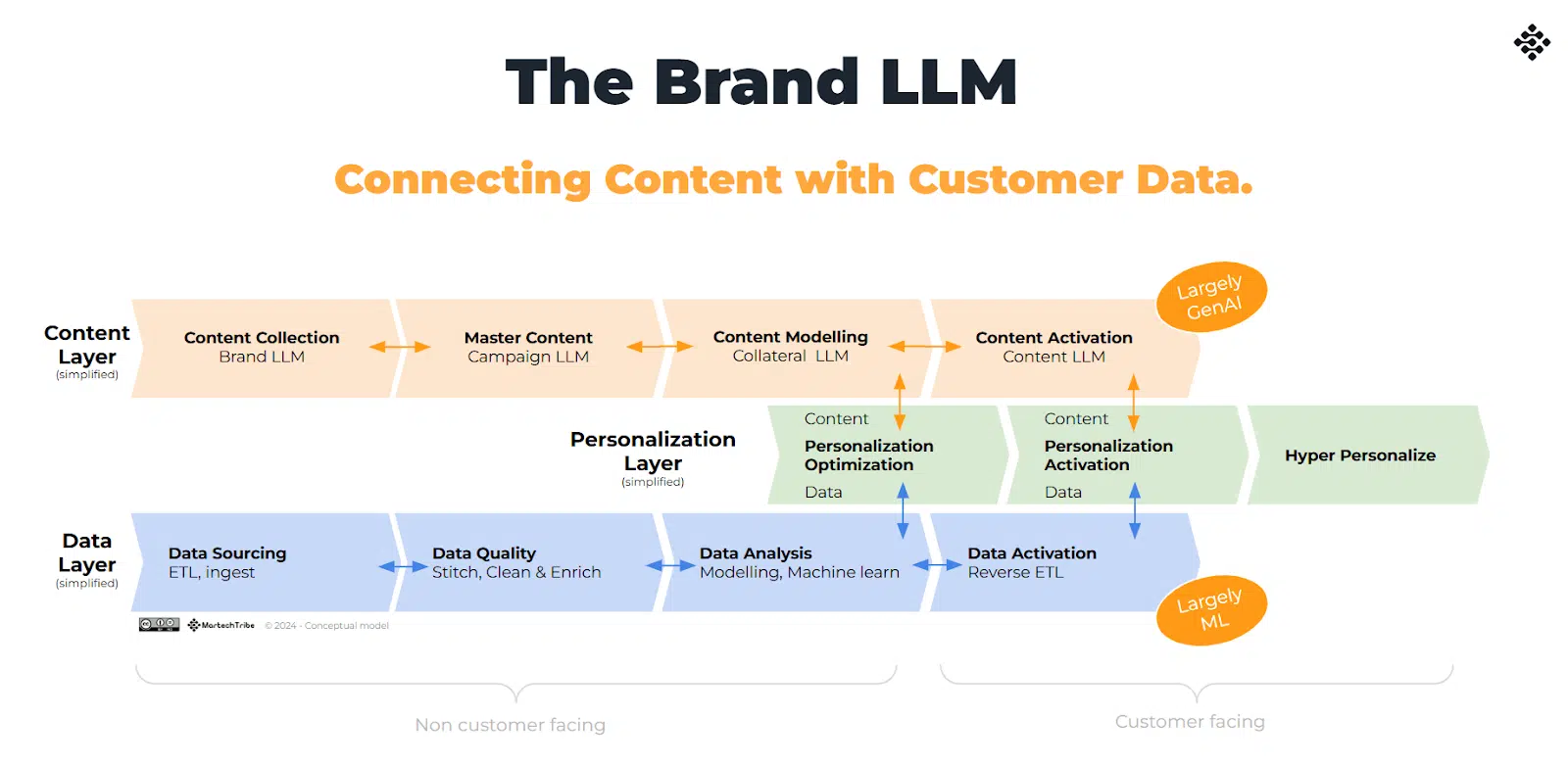

By addressing these levels, a branded LLM evolves into a structured and comprehensive solution for real-time, integrated cross-channel content creation. This unlocks the previously untapped competitive advantage of delivering the right content at the right time to the right person. What is “right” is now defined by insights from the data layer, combined with generative AI analysis of the highest return on content.
Dig Deeper: A genAI co-pilot approach (with quick examples)
Contributing authors are invited to create content for MarTech and are chosen for their expertise and contribution to the martech community. Our contributors work under the supervision of the writing and contributions are checked for quality and relevance to our readers. The opinions they express are their own.
